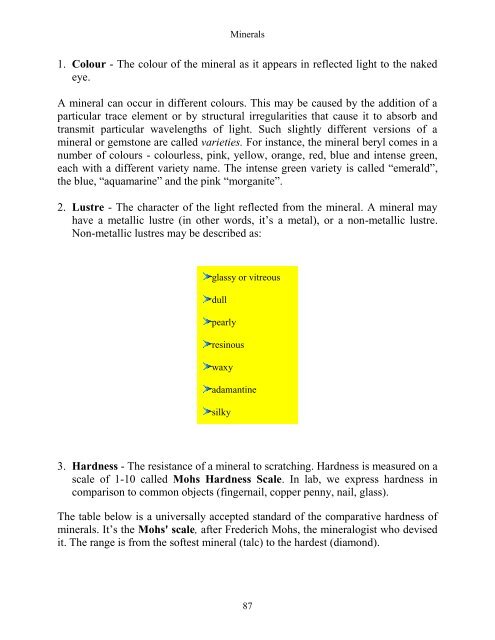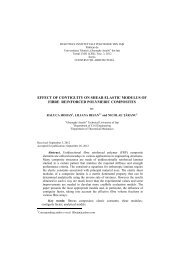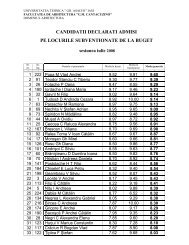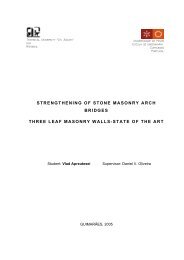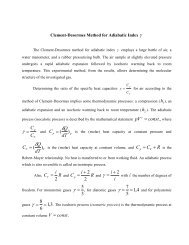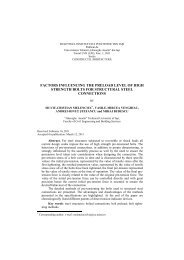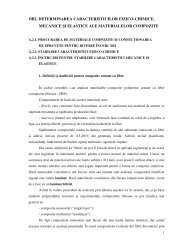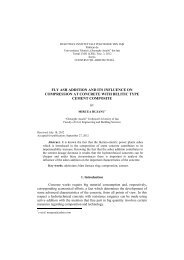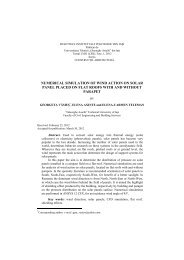1. What Are Minerals?
1. What Are Minerals?
1. What Are Minerals?
Create successful ePaper yourself
Turn your PDF publications into a flip-book with our unique Google optimized e-Paper software.
<strong>Minerals</strong><br />
<strong>1.</strong> Colour - The colour of the mineral as it appears in reflected light to the naked<br />
eye.<br />
A mineral can occur in different colours. This may be caused by the addition of a<br />
particular trace element or by structural irregularities that cause it to absorb and<br />
transmit particular wavelengths of light. Such slightly different versions of a<br />
mineral or gemstone are called varieties. For instance, the mineral beryl comes in a<br />
number of colours - colourless, pink, yellow, orange, red, blue and intense green,<br />
each with a different variety name. The intense green variety is called “emerald”,<br />
the blue, “aquamarine” and the pink “morganite”.<br />
2. Lustre - The character of the light reflected from the mineral. A mineral may<br />
have a metallic lustre (in other words, it’s a metal), or a non-metallic lustre.<br />
Non-metallic lustres may be described as:<br />
glassy or vitreous<br />
dull<br />
pearly<br />
resinous<br />
waxy<br />
adamantine<br />
silky<br />
3. Hardness - The resistance of a mineral to scratching. Hardness is measured on a<br />
scale of 1-10 called Mohs Hardness Scale. In lab, we express hardness in<br />
comparison to common objects (fingernail, copper penny, nail, glass).<br />
The table below is a universally accepted standard of the comparative hardness of<br />
minerals. It’s the Mohs' scale, after Frederich Mohs, the mineralogist who devised<br />
it. The range is from the softest mineral (talc) to the hardest (diamond).<br />
87


